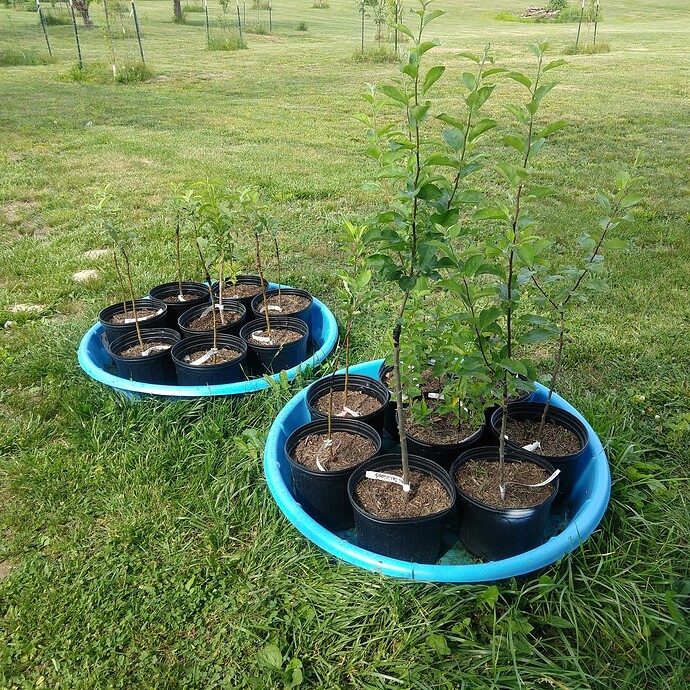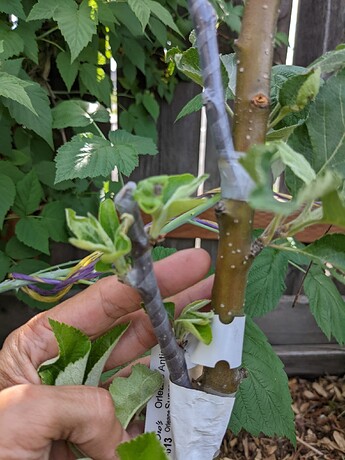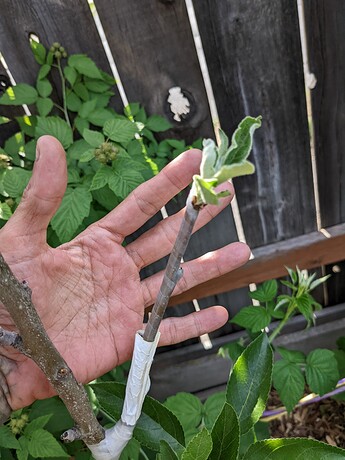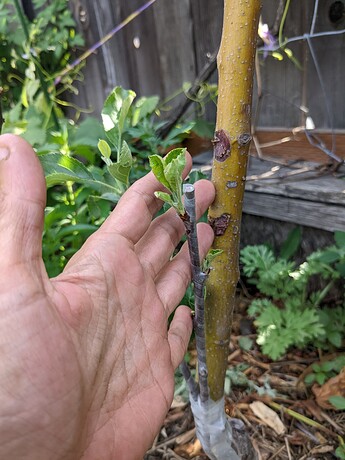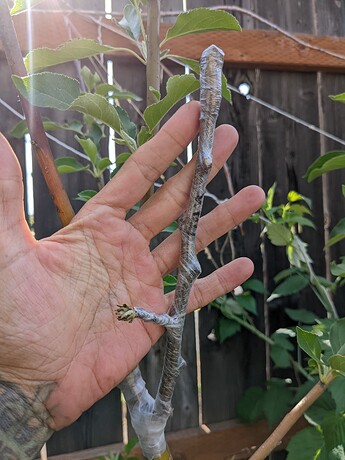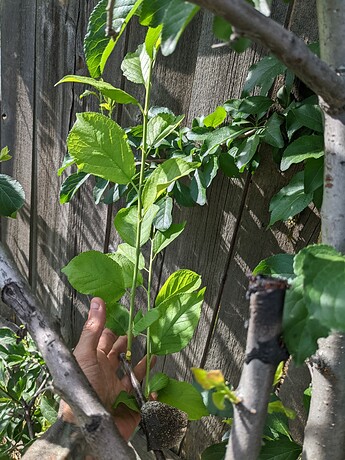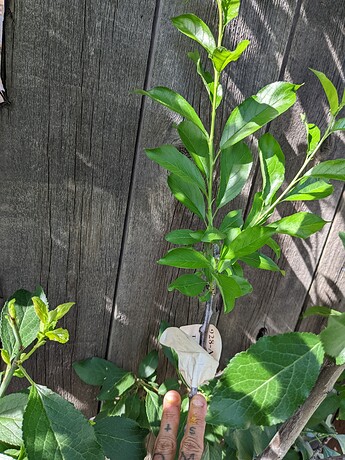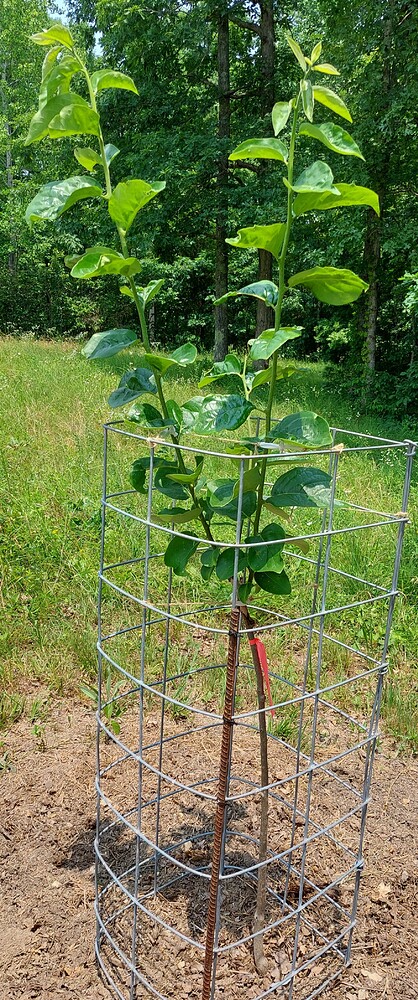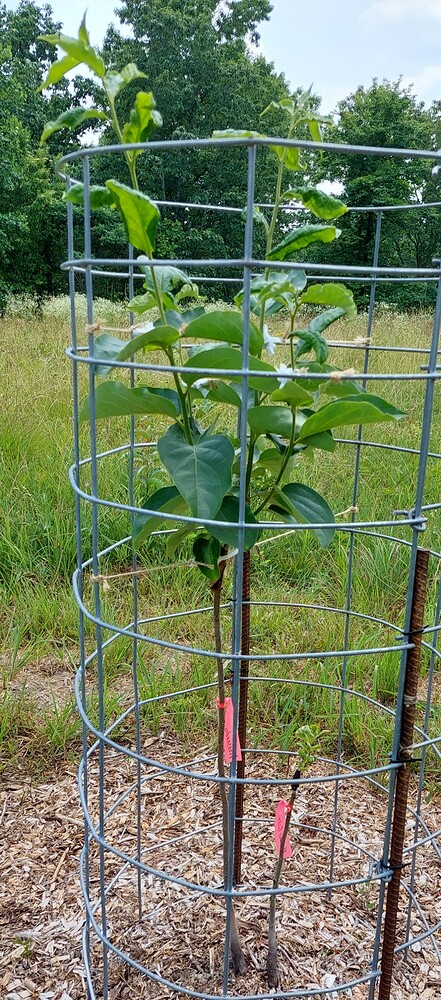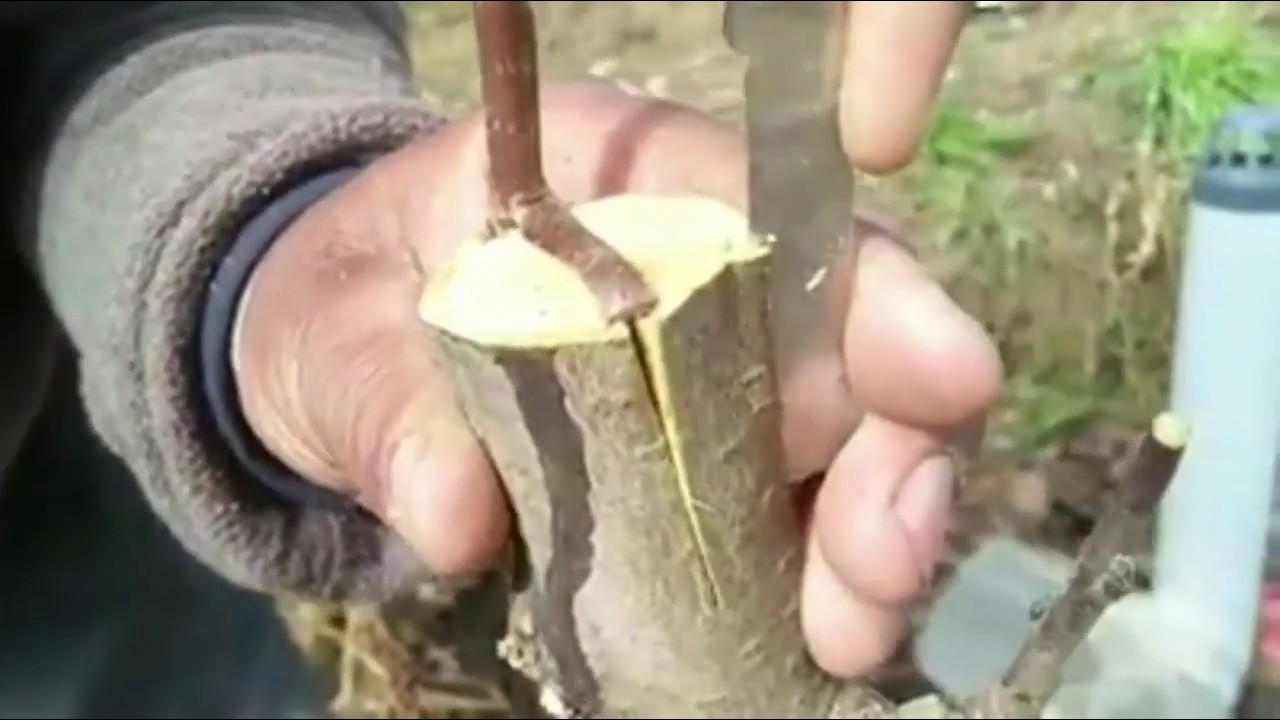What would one call this graft type?
You didn’t explicitly ask for a critique, but I’d recommend wrapping with more pressure. You want to take all of the air gaps out. You may want something stronger than parafilm for that. I like to use grafting rubbers. I over-wrap with one layer of parafilm.
I posted the same video a while back. I gave that method a try once earlier this year, but the flap was breaking off when I tried grafting the scion to J plum. I didn’t have the scion to waste so I grafted it onto the stub (cut on an angle as in the video) without the flap. The graft took anyways and is now the better part of a foot long. I haven’t bothered trying that method again since my first attempt at it. It’s not quite as easy to do as he makes it look. Obviously he’s had a lot of practice to make it look so simple to do.
Hi @kunsangsean Sean.
I am in Virginia and have grafted some Hoyt Montrose this spring, too. I used cleft grafts - to existing branches. I was extremely surprised to have them all take! I don’t know what their future holds, here in the southeast. I’ve never heard of anyone growing apricots here . . . but I’m going to give it a shot.
I also grafted Tomcot, Robada, and Harcot. All onto a ‘cheapo’ peach rootstock that was left after a storm broke off its original apricot bench graft.
I’ve never done a bark graft, like you and others use. I’ll have to try that sometime. Yours look great.
- Pomgranny
@tbg9b great to have your feedback. I agree the grafter in the video sure made it look easy! I do think the scion has to be the right size and flexibility in order to pull off the technique that was shown. It definitely seems more difficult to execute than a cleft graft.
The “table graft” (per video title) looked intriguing as I’m thinking the additional “flap” would help to make graft union stronger and faster to heal. I’d like to give it try next year in lieu of cleft graft I’ve done on Callery pear rootstocks.
I really appreciate this thread, I’m book marking for future reading, tons of great information in this thread.
These are my first ever apple and peach graft attempts, bench grafted in middle of March. I think they are growing well and I’m about ready to move them into full sun dawn to dusk. They are in about 1/2 sun now. A few grafts are approaching 6 foot tall already. The left kiddie pool got less sun in the beginning, than the right kiddie pool, I can really tell the difference in growth.
My newbie observation… Cleft grafting and sliding a scion over that is smaller than the root stock works. But the void on the one side look atrocious, until it heals over then it looks fine. The parafilm/tree coat fell off and I rewrapped the cleft grafts that weren’t fully healed. Hopefully they will be fully healed by the time it falls off again.
@JesusisLordandChrist I like the kiddie pool. Cheap way to make watering a lot more effective and less time consuming.
The kiddie pools were one of my better Ideas, not all my ideas are good ones. I picked up
5 of them at rural king last fall for $2.99 each. I also grew asparagus seedling and strawberries in some last year.
I figured out why my first round of walnut grafts was so completely unsuccessful…turns out I mistook some kind of ash tree for black walnut before the leaves fully came in. I had suspected something like this for a while, but it was only after crushing and smelling the leaves did I really make the connection.
Apple scion 22 days in transit (postal problem) didn’t look good but I grafted it anyway. 50 days later it is showing some green. I wish peach grafting was that easy.
I don’t know what’s wrong (or right) with me, but this year I had roughly 90% takes on peaches, 70% on apricots, 70% on apples, and 50% on pears. Like opposite of what it’s supposed to be.
A combination of Z and cleft! I used the Z graft a lot this spring on my fig to change varieties. It works well just before sap rises on figs.
Probably about 70% takes, some are still yet to grow. It looks like it offers some good cambium contact and ultimate strength
Dennis
Kent, wa
my apple grafts are so slow. the photos in here that say 2 or 3 weeks growth, mine are over a month and far behind. pear I only grafted one this year but it’s also very slow.
my plum grafts take very quickly though. figs take a while but then go wild. I’m using cleft on almost all, I’ve done bark or bud grafting and the results are very similar for me.
examples
all grafted the same day
apples are so slow.
here’s the plums;
any thoughts anyone has on why happens, I’m all ears. edit to add: they all get about the same amount of sun, the apples are in shade for this hour of the day only when a nearby tree dapples them. the plum gets the same treatment an hour earlier in the day as that shadow moves.
Looks absolutely right, thanks.
JT02 Persimmon… longest shoot now 42 inch.
Prok persimmon looking strong.
Kassandra doing well… and Nakittas Gift hanging in there.
Congratulations…good to see your progress.
Thanks @Blueberry – we could use a good rain down here… been dry for a few weeks now.
Highs have been in the mid 80s to lower 90s mostly. So not too hot, which has helped. Looks like it might rain on Sunday 70% chance… a good slow all nighter would be good.
My little Novamac B9 espalier I thinned to 8 apples (2 per branch)… oh well… it dropped them all. Guess I was more ready than it was. perhaps next year.
Persimmons growing very well, they like the heat.
What would one call this graft type?
i didn’t see someone answer this specific question – i believe this would be called a kind of “strapped wedge graft”, according to the “grafter’s handbook”. there are many many versions of all kinds of grafts illustrated in it, applicable to a wide variety of situations. i’ve tried a few of them, but not this one – looks like it could be useful if you get the hang of it!
Whip & Tongue graft method.
@DennisD above called it a combo Z+cleft graft.
@brush Funny you mention “strap”. In another video, I saw a graft called “strap graft”, where both the scion and its connected strap were both inserted into the rootstock as bark grafts on opposing sides. It was like doing a normal bark graft and a bridge graft in one go with one piece of scion. Seems like it could help the healing if the strap part survives. I would be interested to try it out next year if I can find a larger caliper rootstock.

